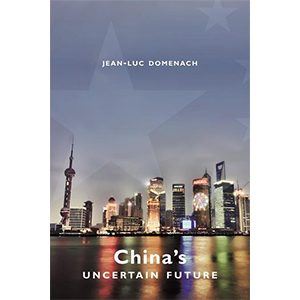Belitung: The Afterlives of a Shipwreck
In 1998, the Belitung, a ninth-century western Indian Ocean-style vessel, was discovered in Indonesian waters. Onboard was a full cargo load, likely intended for the Middle Eastern market, of over 60,000 Chinese Tang dynasty ceramics, gold, and other precious objects. It is one of the most significant shipwreck discoveries of recent times, revealing the scale of ancient commercial endeavors and the centrality of the ocean within the Silk Road story.
But this shipwreck also has a modern tale to tell, of how nation-states appropriate the remnants of the past for their own purposes, and of the international debates about who owns — and is responsible for — shared heritage. The commercial salvage of objects from the Belitung, and their subsequent sale to Singapore, contravened the principles of the 2001 UNESCO Convention on the Protection of the Underwater Cultural Heritage and prompted international criticism and debate. The resulting controversy continues to reverberate in academic and curatorial circles. Today, the finds are proudly displayed at Singapore’s Asian Civilisations Museum as the Tang Shipwreck Collection. But major museums have refused to host international traveling exhibitions of the collection, and some Western archaeologists maintain the objects should be thrown back in the sea rather than ever go on display.
Shipwrecks are anchored in the public imagination, their stories of treasure and tragedy told in museums, cinema, and song. At the same time, they are sites of scholarly inquiry, a means by which maritime archaeologists interrogate the past through its material remains. Every shipwreck is an accidental time capsule, replete with the sunken stories of those on board, of the personal and commercial objects that went down with the vessel, and of an unfinished journey. In this moving and thought-provoking reflection of underwater cultural heritage management, Natali Pearson reveals valuable new information about the Belitung salvage, obtained firsthand from the salvagers, and the intricacies in the many conflicts and relationships that developed. In tracing the Belitung’s lives and afterlives, this book shifts our thinking about shipwrecks beyond popular tropes of romance, pirates, and treasure, and toward an understanding of how the relationships between sites, objects, and people shape the stories we tell of the past in the present.
RM80.00
Out of stock
Description
In 1998, the Belitung, a ninth-century western Indian Ocean-style vessel, was discovered in Indonesian waters. Onboard was a full cargo load, likely intended for the Middle Eastern market, of over 60,000 Chinese Tang dynasty ceramics, gold, and other precious objects. It is one of the most significant shipwreck discoveries of recent times, revealing the scale of ancient commercial endeavors and the centrality of the ocean within the Silk Road story.
But this shipwreck also has a modern tale to tell, of how nation-states appropriate the remnants of the past for their own purposes, and of the international debates about who owns — and is responsible for — shared heritage. The commercial salvage of objects from the Belitung, and their subsequent sale to Singapore, contravened the principles of the 2001 UNESCO Convention on the Protection of the Underwater Cultural Heritage and prompted international criticism and debate. The resulting controversy continues to reverberate in academic and curatorial circles. Today, the finds are proudly displayed at Singapore’s Asian Civilisations Museum as the Tang Shipwreck Collection. But major museums have refused to host international traveling exhibitions of the collection, and some Western archaeologists maintain the objects should be thrown back in the sea rather than ever go on display.
Shipwrecks are anchored in the public imagination, their stories of treasure and tragedy told in museums, cinema, and song. At the same time, they are sites of scholarly inquiry, a means by which maritime archaeologists interrogate the past through its material remains. Every shipwreck is an accidental time capsule, replete with the sunken stories of those on board, of the personal and commercial objects that went down with the vessel, and of an unfinished journey. In this moving and thought-provoking reflection of underwater cultural heritage management, Natali Pearson reveals valuable new information about the Belitung salvage, obtained firsthand from the salvagers, and the intricacies in the many conflicts and relationships that developed. In tracing the Belitung’s lives and afterlives, this book shifts our thinking about shipwrecks beyond popular tropes of romance, pirates, and treasure, and toward an understanding of how the relationships between sites, objects, and people shape the stories we tell of the past in the present.
Publisher: NUS Press
Paperback
2023
ISBN: 9789813252677

 China's Uncertain Future
China's Uncertain Future





